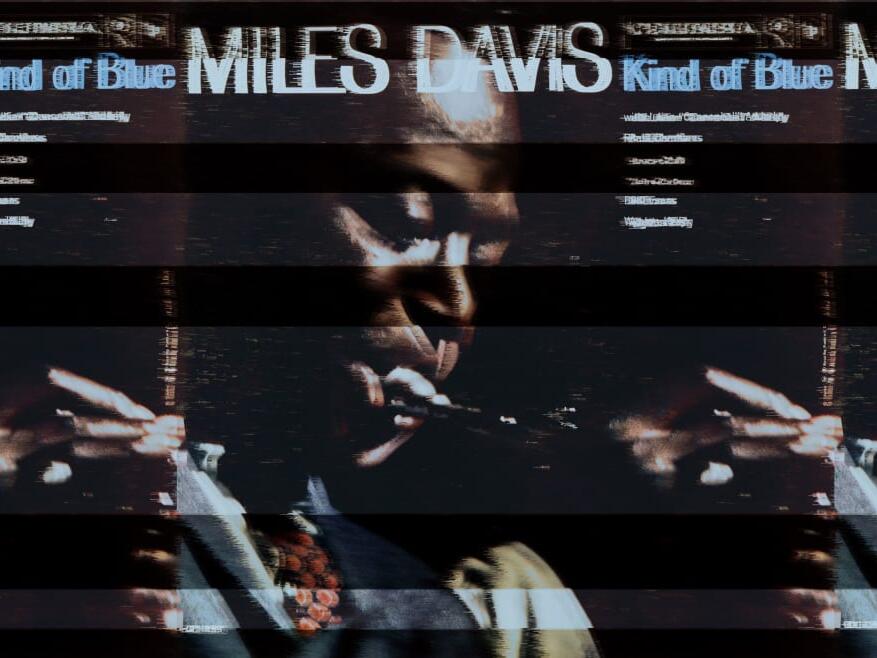Physical Address
304 North Cardinal St.
Dorchester Center, MA 02124
Physical Address
304 North Cardinal St.
Dorchester Center, MA 02124

It didn’t take long after its release on August 17, 1959, for Miles Davis’ Kind of Blue to ascend to a throne it has yet to vacate in all the decades that have followed. With its rise, came the title: Greatest Jazz Album of All Time, an honorific that most non-hardcore jazz listeners have left unchallenged.
If there is an album that people begin—and perhaps end—a jazz record collection with, it’s Kind of Blue. It’s a worthy choice, providing a lifetime of delight. Still, this can be a less-than-ideal reality.
One of my favorite Miles Davis stories involves an awards banquet where a blue-blooded white woman asked him what made him so special. Davis, always blunt, responded that he had reinvented music four or five times, then questioned what she had accomplished in her life.
Davis had put in the work before recording Kind of Blue with John Coltrane on tenor saxophone, Cannonball Adderley on alto, Paul Chambers on bass, either Bill Evans or Wynton Kelly on piano, and Jimmy Cobb on drums in the spring of 1959. Before this, he was a part of the birth of bebop and later created the calm tones of cool jazz. After a period of drug problems, he rediscovered his groove at the 1955 Newport Jazz Festival with a solo that seemed almost divine.
From there, Davis revolutionized hard bop, often with Coltrane by his side. Jazz is a music of partnerships and duos like Parker and Gillespie, Holiday and Young, Dolphy and Little. None had more tension than Davis and Trane. When harmonious, the music soared; when not, it was still compelling, even if slightly disjointed.
Coltrane excelled in the mid-1950s hard bop albums with Davis’ first great quintet. These records, often cut on a budget, embodied a spirit where anything within a player’s range was permissible. Coltrane continuously pushed his abilities, each session expanding his musical boundaries.
For Kind of Blue, Davis took a new approach by confining soloists to modes—scales, essentially. Players could invent freely but had to build from a set mode.
Think of it as a game. The musicians would play, challenged like children. The form was prescriptive, but allowed for creative freedom. The result is an album that might be the most melodic in all of jazz, if not in popular music.
The music of Kind of Blue has a hummable quality. It’s wordless jazz but has built-in “ghost words” that make it linger in your head. The instrumentalists, like Bill Evans’ piano or Cannonball Adderley’s horn, translate these ghost words into melodies.
Coltrane, capable of melody, feels more like a sixth man on Kind of Blue, not the MVP candidate. Most people discover Kind of Blue early in their jazz journey. While it’s an iconic album, it’s not even close to the best music Miles Davis ever made.
Milestones, recorded the previous year, also explored modes with more daring. Kind of Blue often tries to please while Milestones pursues its own aims, offering just as much to repeat listeners.
Davis’ sessions at the Plugged Nickel in 1965 with his second great quintet, or the Cellar Door material from Washington, D.C. in 1970, provide deeper insights into his work. You can experience much of what Davis offers without Kind of Blue. This isn’t to diminish the album’s significance—it deserves repeated listening—but don’t let it be your endpoint.
In film, Citizen Kane was once considered the best ever. In rock, it was Sgt. Pepper. These titles are often challenged and jazz should be no different. While many seek out Kind of Blue as a badge of cultural credit, it’s important to explore beyond it.
Kind of Blue provides comfort, but if you haven’t heard Davis’ E.S.P. (1965) or Agharta (1975), you’re missing out. The Kind of Blue band wasn’t built to last. Davis moved on, evolving his style, with Coltrane departing in the spring of 1960.
Take a lesson from Miles Davis: Hear Kind of Blue, but don’t stop there. Explore more. Listen like Miles created.
Source: The Daily Beast



